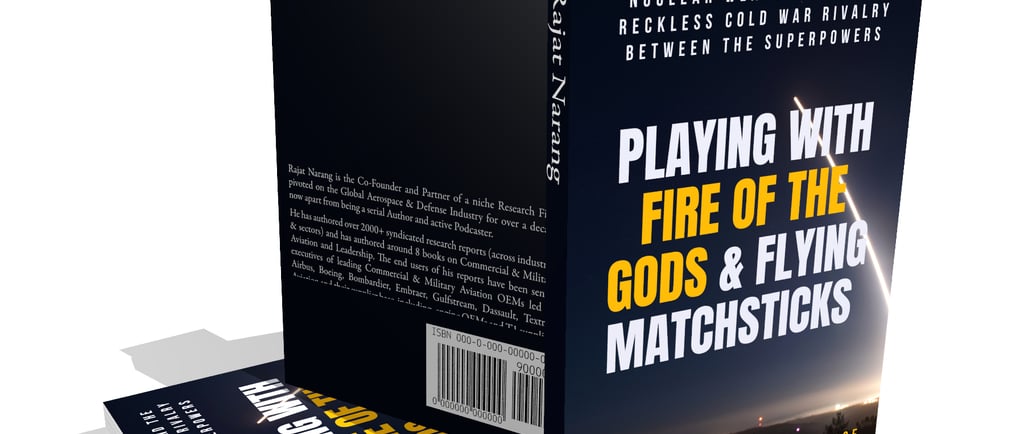How the sole opportunity for complete denuclearization of the planet was effectively squandered 38 years ago…
Amid the latest award of the Nobel Peace Prize for 2024 awarded to a Japanese Hibakusha nuclear bombing survivors group for their decades-long efforts towards de-nuclearization; it is imperative to look at the sole opportunity in the history of mankind when a diplomatic denuclearization of the planet was possible but squandered due to mistrust...


U.S. President Ronald Reagan and Soviet top leader Mikhail Gorbachev met in Reykjavik, Iceland on October 11 and 12, 1986, as had been agreed upon during the 6th round of arms control negotiations between the sides. Just a week prior to the summit, on October 04, 1986, President Reagan set the context in his radio address to the nation by seeking continued support for defense appropriations as he believed that it was instrumental in bringing about the Soviet Union’s latest volte-face on arms race. He said, “We believe our 5 1/2-year military buildup has been a principal factor in bringing the Soviets to the negotiating table.”
In Reykjavik, the Soviets unconditionally accepted the Double-Zero Proposal, first offered in November 1981 by Reagan himself to Leonid Brezhnev, as per which, the Soviets were to remove the SS-20s from Europe, in return, for America’s non-deployment of Pershing-IIs and GLCMs across Europe. The development, thus, unlocked the door to complete removal of intermediate range ballistic missiles from Europe.
However, the Soviets wanted America to pledge to halt the implementation of SDI and missile defenses, at least for the next decade, through 1996, as quid pro quo. Reagan, however, refused to compromise on SDI while offering to eliminate all ballistic missiles within a decade’s horizon as he wanted the overarching focus across both sides to be shifted from offensive ICBMs, which was clearly a Soviet forte, to missile defenses.
Gorbachev, in turn, in a historic & almost monumental development, made the unprecedented offer of removal of all nuclear weapons across both sides on the condition and American promise of keeping the SDI research & testing limited strictly to American laboratories through 1996. This was the golden moment in the history of mankind, which, truly, had the potential of altering human destiny forever by untying the Gordian knot of nuclear weapons by providing a diplomatic mechanism towards denuclearization of the planet.
At this moment, Reagan had to choose between his personal desire for denuclearization and his political career & public standing, as the President, while also addressing his own and his administration’s mistrust of the Soviet (justifiably so after the 1979’s Soviet invasion of Afghanistan amid the ongoing START-II ratification). However, he chose the allure & glory of his role and mistrust of Soviets over the coveted promise of denuclearization for mankind. Reagan refused to cede SDI and, in turn, made the astonishing and almost incredulous promise of sharing SDI technology with the Soviets as an alternate pathway towards denuclearization. However, the questionable credibility of the preposterous American promise and the potential exorbitant costs of any SDI system rendered the promise practically useless.
However, some political analysts and even some staffers in the Reagan administration, believe that a 10-year moratorium on SDI’s development would not really have made any major difference to the program as it was still in its infancy and had to overcome mammoth technological issues & challenges; namely, survivability of space based assets against the threat of ASAT weapons, discrimination of warheads from decoys in the mid-course intercept phase and deficiencies in space-lift & logistics capabilities; would have taken way more than just a decade to tackle and resolve, as even Reagan himself had acknowledged in his public comments and statements that SDI’s implementation would invariable be subject to the purview and prerogative of future U.S. Presidents and Congresses.
Reagan, later, in his address to the nation, a day after returning to America, on October 13, 1986; justified and attributed his decision, of not ceding with SDI even for denuclearization, to the deeply rooted issue of mistrust, a hallmark of the Cold War between both sides. He said. “Let me return again to the SDI issue. I realize some Americans may be asking tonight: Why not accept Mr. Gorbachev's demand? Why not give up SDI for this agreement? Well, the answer, my friends, is simple. SDI is America's insurance policy that the Soviet Union would keep the commitments made at Reykjavik. SDI is America's security guarantee if the Soviets should—as they have done too often in the past—fail to comply with their solemn commitments. SDI is what brought the Soviets back to arms control talks at Geneva and Iceland. SDI is the key to a world without nuclear weapons. The Soviets understand this. They have devoted far more resources, for a lot longer time than we, to their own SDI.”
Thus, American mistrust of the Soviets effectively led to effecrive squandering of the sole denuclearization opportunity 38 years ago…
Note: Above is an excerpt from the upcoming book, "Playing with Fire of the Gods & Flying Matchsticks - Nuclear Weapons and the Reckless Cold War Rivalry between the Superpowers"
The book is releasing on November 15, 2024 and is available for pre-order on Amazon
About the Author: Rajat Narang is the Co-Founder & Partner of Noealt Corporate Services apart from being an A&D Industry Researcher & Specialist, Serial Author and Nuclear, Aviation & Cold-War Historian. For his full bio and list of books authored by him on the Global A&D Industry, access his author page on Amazon.


